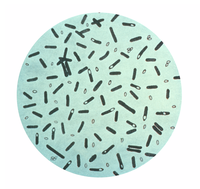
Photo from wikipedia
We report a case of successful treatment of chronic osteomyelitis (emanating from contaminated soil exposure) caused by Clostridium sphenoides, an organism infrequently identified as a cause of human infection and… Click to show full abstract
We report a case of successful treatment of chronic osteomyelitis (emanating from contaminated soil exposure) caused by Clostridium sphenoides, an organism infrequently identified as a cause of human infection and more saliently osteomyelitis (only 1 reported case in the literature). Additional impetus for reporting this case resides in the insights gained regarding pathogen identification exploiting sophisticated molecular platforms coupled to traditional microbial culture-based methods. The fastidious nature of cultivating anaerobic organisms required initial attempts at 16S rRNA sequencing to identify a Clostridium species (Clostridium celerecrescens). However, on exploiting matrix-assisted laser desorption ionization time of flight (MALDI TOF) technology, C. sphenoides was identified, and confirmed on whole genome sequencing. The discrepancies noted in the varying platforms require vigilance to seek complementary testing for conflicting results. Although highly accurate, the MALDI TOF and 16S rRNA sequencing platforms are not immune to false identification particularly in differentiating closely related organisms. More germane, whole genome sequencing should be entertained when conflicting results are obtained from MALDI TOF and 16S rRNA sequencing. Precise species and/or strain level identification can be clinically relevant as antimicrobial sensitivity profiles may be discrepant between closely related species influencing clinical outcomes. Thus, it is incumbent on us to strive to acquire the correct species characterization when resources allow to dictate optimal treatment.
Journal Title: Military medicine
Year Published: 2017
Link to full text (if available)
Share on Social Media: Sign Up to like & get
recommendations!